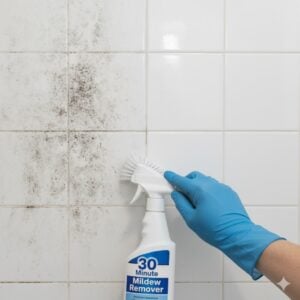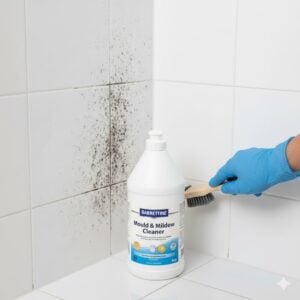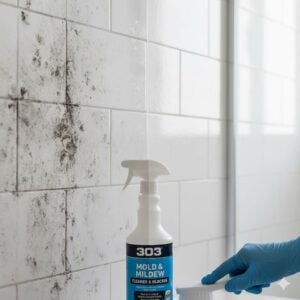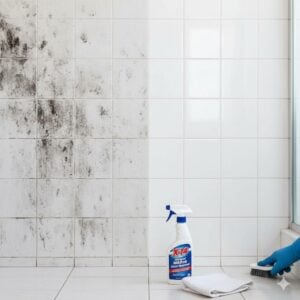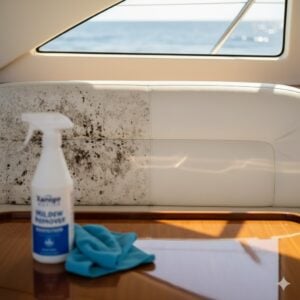Waking up to wet walls, misty windows, and a musty smell in the bedroom is frustrating—and in the UAE it’s very common. That moisture you see is condensation: warm, humid air touching a colder surface (like an exterior wall cooled by AC) and turning into water droplets. Left alone, it can lead to peeling paint, damaged furniture, and mold that affects your health. In this guide, we explain why condensation happens in bedrooms, how to tell it apart from leaks, and what you can do—today and long-term—to stop it.
Table of Contents
Toggle1) Why condensation forms on bedroom walls (UAE edition)

Condensation is simple physics: air holds water vapor; when that air touches a colder surface, it cools to its “dew point” and drops water onto that surface. Bedrooms in the UAE are perfect for this because:
AC + concrete = cold walls. Concrete exterior walls lose heat fast under strong AC. When you breathe and sleep, you add moisture to the room. That moist air touches a cold wall and condenses.
Sealed windows & low ventilation. Modern apartments and villas are airtight to keep cool air in. Great for energy, not great for moisture removal—water vapor stays trapped at night.
Night routine adds humidity. Evening showers nearby, drying clothes indoors, lots of indoor plants, or running a humidifier can push room humidity above 60%, making condensation almost guaranteed.
Thermal bridges. Corners, window frames, and columns often run colder than the rest of the wall. That’s why you see dark, damp triangles in corners or around the AC bulkhead.
2) Is condensation bad—or just annoying?
Occasional light fog on glass isn’t a crisis. Persistent wet walls are. Here’s why:
Damaged surfaces. Repeated wetting breaks paint, swells wood, and stains gypsum. You’ll see blistering, flaking, and salt-like marks (efflorescence) on masonry.
Mold risk. A consistently damp wall can grow mold within 24–48 hours. That brings musty odor, black/green spots, and potential health symptoms (sneezing, irritated eyes, cough, worsened asthma).
Dust mites & allergies. High humidity helps dust mites multiply in bedding and carpets, triggering allergies even without visible mold.
If you see damp patches mostly in the morning, in cold corners, and it varies with AC use or weather, it’s likely condensation. If the patch is always wet, spreading, or shows brown rings, treat it as a possible leak (see section 5).
3) Stop it today: a simple bedroom routine that works
You don’t need renovations to make a difference. Try this quick routine for the next 7–10 days and watch the wall dry out:
Morning (10–15 minutes): Open the bedroom door and one window (if safe) to create a short cross-breeze. Run an exhaust fan (bathroom/kitchen) to pull moist air out. Wipe visible moisture on walls/window sills with a dry microfiber cloth.
Daytime: Keep the AC set between 23–24 °C. If your AC has a Dry mode, use it for 30–60 minutes to pull humidity down. Avoid drying clothes in the bedroom. Leave wardrobe doors slightly ajar to prevent moisture pockets.
Night: Move the bed 5–10 cm away from exterior walls so air can flow. Run a small desk or ceiling fan on low to mix air (not to cool—just to prevent cold spots). If humidity routinely sits above ~60%, place a dehumidifier set to 50–55% RH.
Small layout tweaks: Don’t push big furniture tight against cold walls. Lift curtains off sills a little so air can circulate around glass and frames. Remove clutter from damp corners.
4) Longer-term fixes (for stubborn condensation)
If the routine helps but doesn’t solve it, tackle the causes. Mix and match these upgrades based on your space and budget:
Improve ventilation. Add or service bathroom and kitchen extractors (they should actually exhaust outdoors). Consider trickle vents or window vents so a little fresh air can enter without losing all your cooling. In larger villas, an ERV/HRV can exchange stale indoor air for fresh air while keeping most of the cool.
Control humidity at the source. Fit a timer on bathroom fans (run 20–30 minutes after showers). Fix dripping taps, AC condensate leaks, and gaps around window frames. In wardrobes on outside walls, add small vent grilles or a moisture absorber to keep air moving.
Warm up the cold surface. Where the wall itself is the problem, reduce “thermal bridges.” Options include insulated liner boards, thin internal insulation panels in corners, or high-quality anti-condensation / thermal paints that slightly raise surface temperature and absorb/release minor moisture. (Paint helps control the symptom—pair it with ventilation for best results.)
Upgrade AC behavior. Many split units chill quickly but don’t dehumidify enough on short cycles. A pro tune-up (correct refrigerant, clean coils/filters, right fan speed) can increase moisture removal. Smart thermostats that avoid rapid on/off cycling often help.
| Problem | Why it happens | Best fix |
|---|---|---|
| Wet corner triangles | Cold thermal bridge at concrete column | Insulated lining or thermal paint + airflow |
| Drips under AC bulkhead | Overcooling + poor dehumidification | AC service, use Dry mode, set 23–24 °C |
| Musty wardrobe on outside wall | Stagnant air pocket | Pull wardrobe off wall, vent shelves, desiccant |
5) Leak or condensation? A quick diagnosis you can do
Before repainting, be sure it’s not a plumbing or rain leak. Here’s a simple way to tell:
Pattern & timing. Condensation shows up overnight/mornings, usually in corners/exterior walls, and changes with AC or weather. Leaks are wet all day, often with brown rings, bubbling paint, or localized streaks.
Touch & smell. Condensation feels cool and dries within hours of good airflow. Leak areas may feel damp behind the surface and smell earthy even after airing out.
Foil test (12–24 hours). Tape a small square of aluminum foil tightly to the wall. If moisture forms on the room side of the foil, it’s condensation. If the wall behind becomes damp, suspect a leak or rising moisture.
Don’t forget AC drainage. A blocked condensate line can overflow near the bedroom bulkhead, imitating “mysterious” wall damp. A quick service often solves it.
6) Cleaning safely and preventing mold after condensation
Once a surface has been wet, act fast to avoid mold:
Dry first. Improve airflow, run fans, and wipe the surface. Never paint over a damp wall.
Clean carefully. Wear gloves and a simple mask. For small, light spots, use a mild detergent solution or a ready-made anti-fungal cleaner; rinse and dry. For repeated black spotting, consider a professional clean and anti-microbial treatment.
Repaint the right way. After the wall is fully dry, use a stain-blocking primer and, where helpful, a high-quality bathroom/anti-mold or anti-condensation paint. Remember: paint helps, but the cause (humidity + cold surface) must be fixed too.
Set a target humidity. Aim for 45–55% relative humidity in bedrooms. If you don’t have a hygrometer, grab a small digital one—it’s cheap and powerful. Seeing the number helps you keep it in the safe range.
7) A practical, one-page plan you can follow
Tonight: Pull furniture 5–10 cm off exterior walls, set AC to 23–24 °C, run fan on low, and keep wardrobe doors slightly open.
Tomorrow morning: Vent for 10–15 minutes, wipe condensation, and run the bathroom extractor after showers. Check RH—if it’s over 60% most mornings, consider a dehumidifier.
This week: Service AC (clean filters & drain), seal visible window/door gaps, add a small desiccant in wardrobes, and note where damp returns.
This month: If the same spots reappear, upgrade ventilation, try thermal/anti-condensation paint in cold corners, or add a thin insulated liner behind the headboard or wardrobe.
When to call a professional
If you see recurring damp patches, peeling paint that returns after drying, or any black/green mold spots, it’s time to get help. A pro can measure humidity, find hidden moisture, treat any mold safely, and give you a targeted plan for your specific room. If you’d like support tailored to your bedroom layout and AC setup, just click the contact button on the right-middle of this post—we can assess and recommend the fastest, most cost-effective fix for your home.
Bottom line
Condensation on bedroom walls happens when humid air meets cold surfaces—common in UAE homes with strong AC and limited ventilation. The solution is a mix of daily habits (ventilate, set sensible temperatures, keep air flowing) and smart upgrades (better extraction, small insulation tweaks, or AC tuning). Do the simple routine first; if damp persists or you spot mold, bring in help quickly. Your walls—and your lungs—will thank you.









